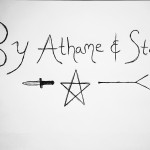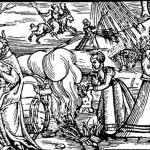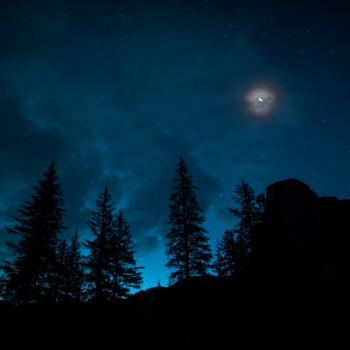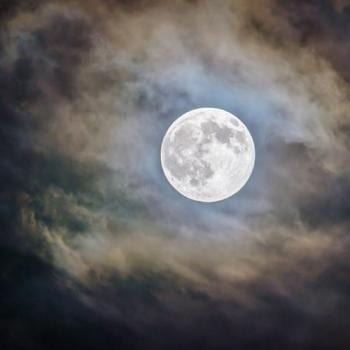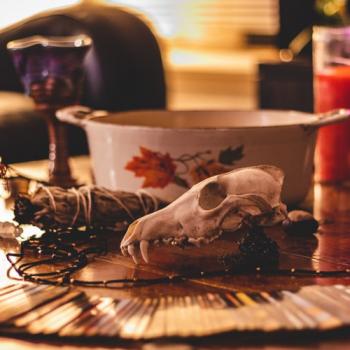Ever since I was a small child I have been enamored with all things “spooky.” Whether it had to do with Witches, ghosts, fairies, or other assorted magical beings, I was completely obsessed. My mother believes that this otherworldly predisposition may have something to do with my birth-date being close to Halloween. This is quite possible, as a flip through my baby book will show you that my birthdays were always Witch themed. But my “spooky” interests weren’t limited to any specific time of year. In fact, in addition to Halloween there were two other major factors that contributed to my early fascination with Witchcraft.
One such influence were the fairy-tales that I, like most other children, grew up with. However, unlike most children, I wanted nothing to do with ditsy princesses or handsome knights. It was the evil queens, dark fairies, and decrepit hags I was drawn to. Despite their reputation as being the adversaries of all things good and holy, I saw them as strong women imbued with otherworldly powers to change their lives and manifest their desires. Unlike their goodly counterparts, these ladies didn’t need anyone to save them, because they were their own heroes. So, while others may have been afraid of Witches and the darkness in which they roamed, I embraced it. Through these characters I learned to draw on my own power to stand up for myself, effect change, and to be fearless.
Another influence was the relationship I had with nature. I spent a lot of time playing in the woods behind my house, and it was there that I’d have my first experiences with spirits and the Gods. I wasn’t interested in playing sports or video games, instead I’d rather put on my favorite black cloak and disappear into the woods. In that enchanted realm, I’d run through the trees, build fairy houses, speak with the deer, and collect plants, rocks, and feathers. Communing with spirits, animals, and fairies during these times was commonplace. Through these conversations I learned about the sacredness of nature and the connection between all things. My mother had taught me about God and brought me to church, but it was only among the trees that I ever truly felt connected to anything spiritual.
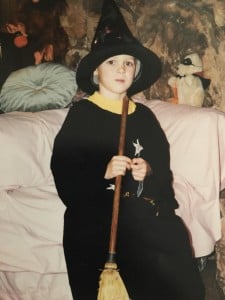
In fifth grade I discovered Wicca while researching Witchcraft on the internet. The website I stumbled upon is long gone, but I distinctly remember the flashy moving pentacles and awful wind-chime music playing in the background. Despite my firm belief in Witchcraft, I was still astounded to learn that I wasn’t alone. I read with great fervor about this religion called Wicca, mesmerized by the list of its common beliefs. Needless to say, I took down every last detail that website had to offer me and committed it to memory.
Soon after my initial exposure, as per instruction, I erected my first altar. It was a small wooden table (originally for my sister’s dolls), onto which I placed a red candle for the God and a green candle for the Goddess, a glass goblet, and a black handled kitchen knife. I vividly remember my mother asked me about it and in a matter-of-fact tone I told her:
“It’s an altar to honor the God and Goddess of nature.”
She was a little less than enthused but certainly didn’t stop me by any means. In fact, she bought me my first two books, The Everything Wicca and Witchcraft Book and The Little Giant Encyclopedia of Spells and Magic.
Embarrassingly enough, I was so enthusiastic about my discovery of Wicca that I tried converting a good number of students in my fifth grade class.

Sixth grade was the definitely height of my love affair with Wicca, which in hindsight this makes perfect sense. Middle school was hell for me. I didn’t have many friends and I was the subject of frequent bullying. But Wicca gave me a sense of empowerment that helped me through that nightmare time. It didn’t matter that I wasn’t popular or that I was relentlessly ridiculed, because I was a part of something mysterious and magical that those assholes would never be. I was Wiccan and I was proud!
To Ride a Silver Broomstick was my bible and I wore my Teen Witch Kit pentacle to school with great delight. Study Hall was spent doodling altar layouts, copying down correspondences, and writing spells. When assigned to write a short story for class, I wrote about a group of friends working together as a coven which, embarrassingly enough, I read aloud to the class.
The level of openness I had about being Wiccan did lead to trouble at times. There was a group of girls who constantly hounded me with bible quotes, the school principle told me he couldn’t help me if I wasn’t going to fit in with the mainstream, the boys in the locker room were afraid I’d hex them, and I know someone stole The Grimoire of Lady Sheba out of my locker!
But nothing could deter me. I felt an incredibly deep connection to nature and the Gods and after a crappy day at school I always knew I could go home and find comfort in the woods behind my house or in the pages of my books.

Despite my sixth grade Wiccan bliss, as I grew older, I became increasingly dissatisfied for a number of reasons. Firstly, I began to see Wicca as a very materialistic religion. This was a direct result of encountering other Witches online who, instead of discussing experience and practice, only wanted to talk about their tools, their altars, and their recent purchases. Secondly, I started to become more aware of hypocrisy and drama. Wicca claimed to be such a tolerant and accepting religion yet I was seeing a lot of bashing, not only of other religions (particularly Christianity), but of other Wiccans. Thirdly, as a I began college and started being more academically critical, I started to question a lot of what was being presented in the books I was reading. I was fed up with claims I knew were inaccurate, such as that Wicca is the oldest religion in the world or that those killed during the so called Burning Times were actually Witches. And so finally, after much frustration I gave up on Wicca, so to speak. In reality, however, I only really dropped the label, as my practices obviously continued to be very Wiccan oriented. But I didn’t really understand that at the time.
It wasn’t until a few years later that I stumbled upon new websites and suddenly a flame sparked back to life. I found wonderful blogs written by Witches who were academic, well researched, and informative. Through their writing, I began to realize that there was way more to Wicca than what I had originally thought and what I had encountered. This in turn brought another realization that while I had been criticizing Wicca for supposedly lacking academic credibility, I had been living in my own ignorance. I had been frustrated with the information being presented in books, yet instead of doing my own research, seeking answers to my questions, and helping to clear up misinformation, I had just given up.
But no longer! There was a whole history of modern Witchcraft that I had missed, and I wanted to know everything.
I began my quest by going back to start, reading the works of Gardner, Valiente, the Farrars, and others. From there I extended both backwards and forwards in time, examining where the different parts of Wicca came from, how they’ve evolved, and where they were headed. It was during this time that I discovered the idea of Traditional Witchcraft, and I was immediately drawn in, feeling a comforting sense of familiarly, often described as “coming home.” There was only one problem. I quickly caught on to the fact that Traditional Witchcraft is often presented as being in direct opposition to Wicca. However, as my research continued, despite what others were claiming, I began to see many similarities between the two paths.
For me, I see Traditional Witchcraft as a set of base practices that have been attributed to Witches throughout time and across cultures. These practices include things like, working with spirits, healing, cursing, working with herbs, divining the future, and spirit flight. Obviously, Wicca as a specific form of Witchcraft contain many (if not all) of these practices. After all, if Gardner had gotten his fragmented tradition from an older coven, wouldn’t that make it some form of “Traditional” Witchcraft? Even within specific forms of Trad Craft (such as Cochrane’s) I’ve noticed overlaps and parallels to Wiccan practices.
Of course all of this has proved to be a very unpopular opinion to hold as suggesting any commonalities will surely leave you swiftly reprimanded. I’d like to make it clear that I’m not trying to say that Traditional Witchcraft and Wicca are the same. Nor am I necessarily trying to say that either has influenced the other. What I am saying is that when we stop slinging mud and take a deeper look at the history of Witchcraft, we can see the common roots they share.
And so here I am today, writing about my practice, what I’ve learned so far, and the questions I still have.

